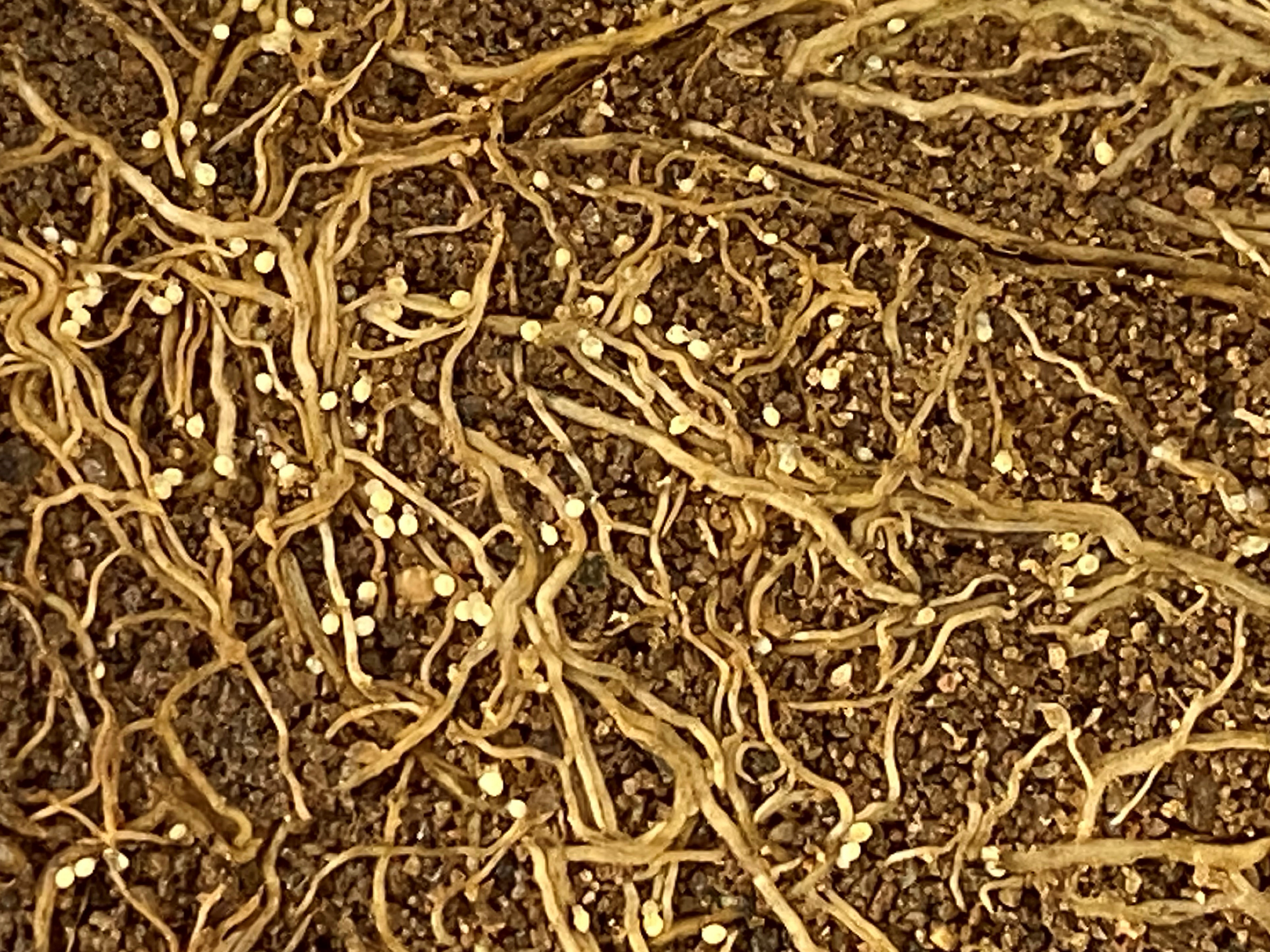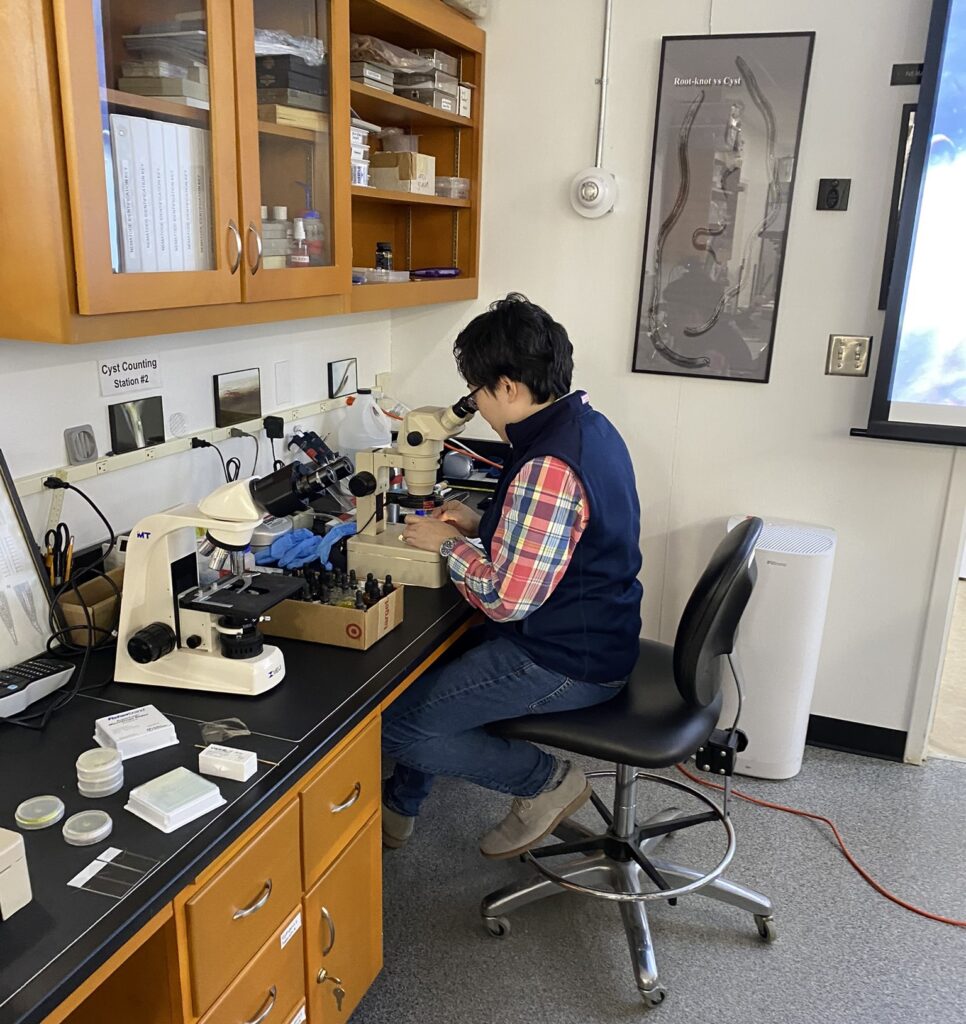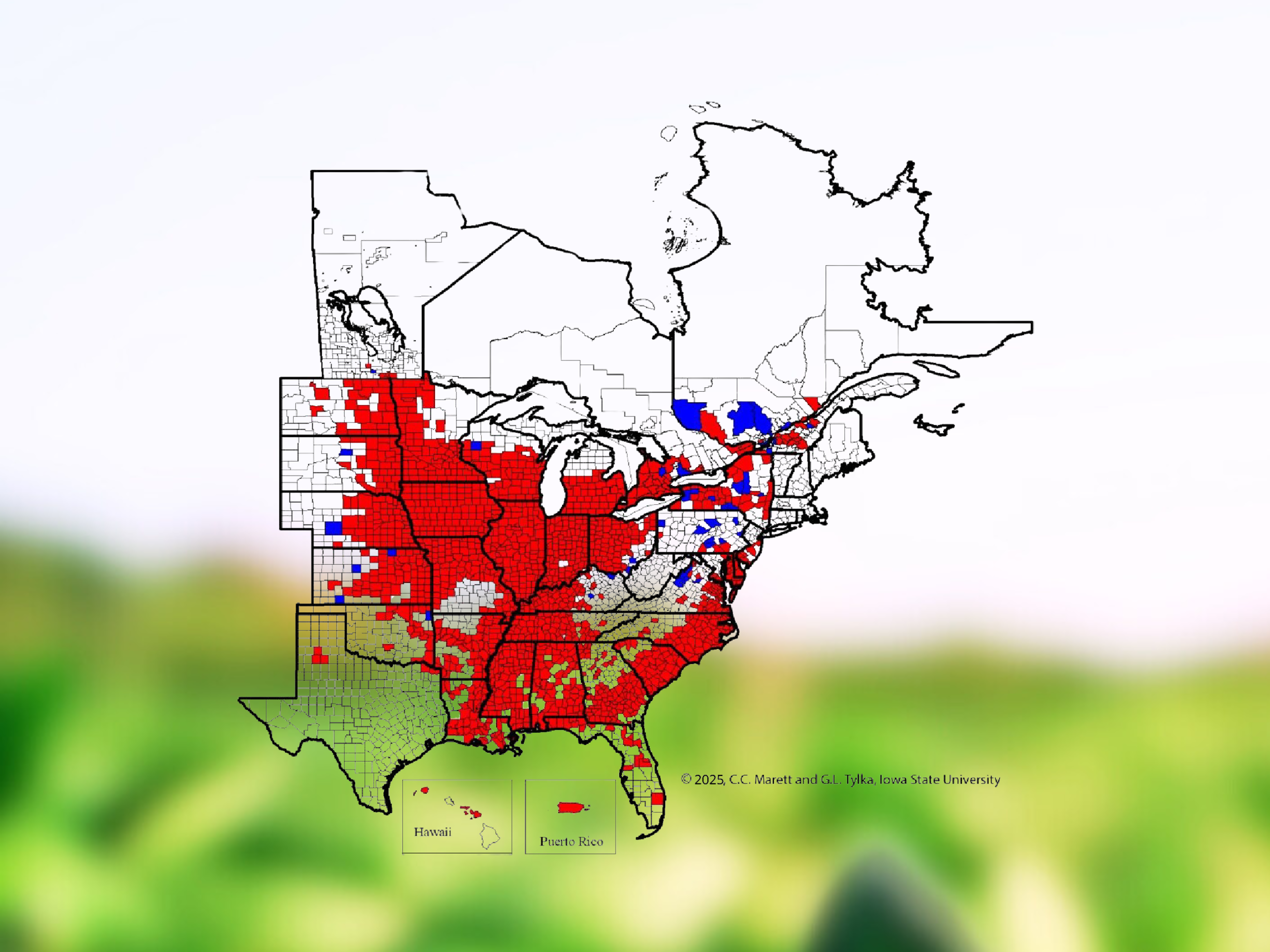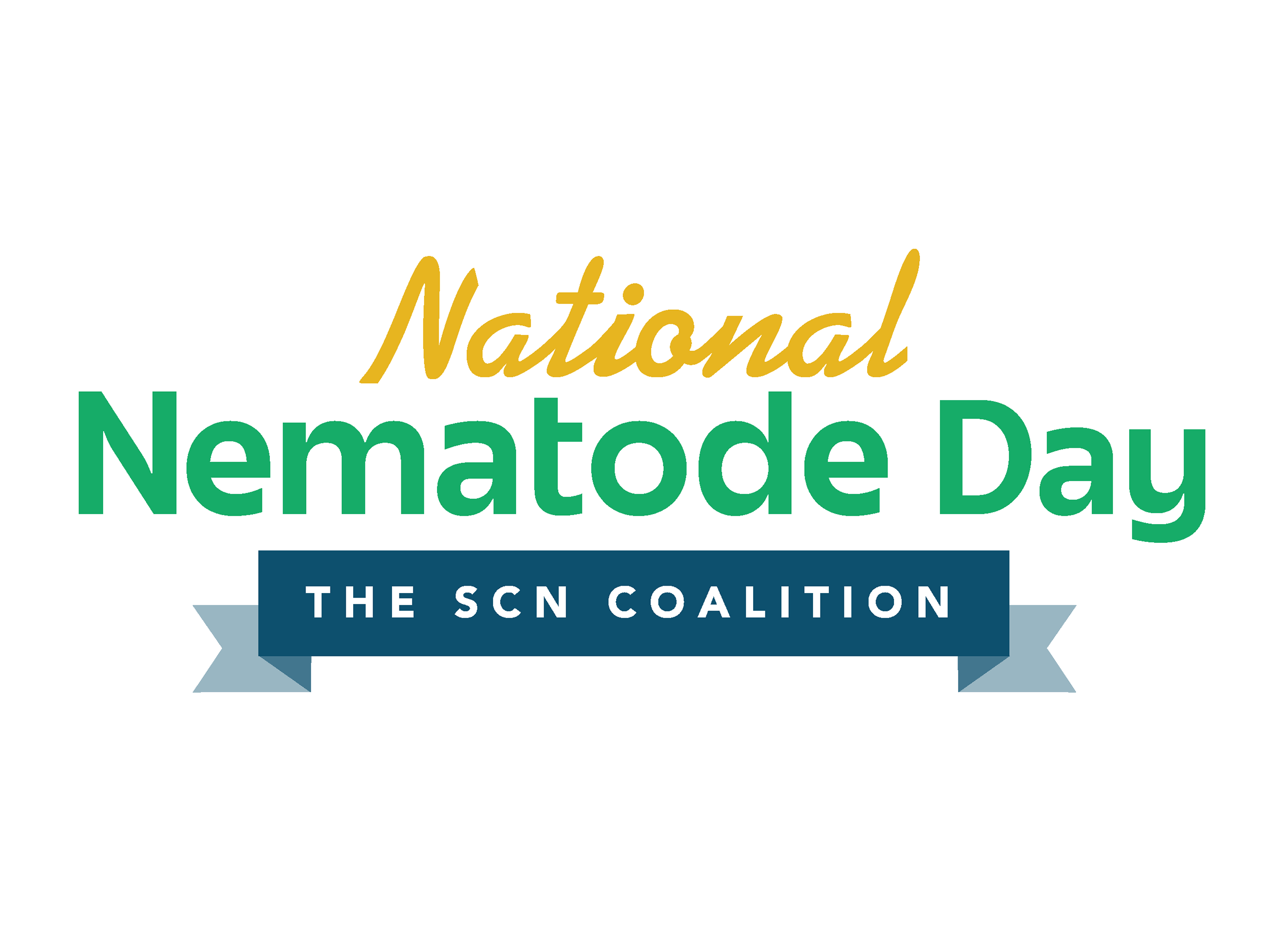
Researchers have made a major discovery in the fight against soybean cyst nematode (SCN). They took a relatively uncharted path and focused on the genetics of the parasitic roundworms. Extensive genetic sequencing coupled with genetic mapping helped them identify a handful of likely genes behind the tricky pests’ ability to skirt soybean genetic resistance.
“Out of the nine chromosomes and tens of thousands of genes in a nematode, we’ve mapped the areas involved in virulence [the nematode’s ability to reproduce on a resistant host] down to specific regions — in particular Chromosomes 3 and 6 — and a handful of genes,” says Melissa Mitchum, professor of nematology in the College of Agricultural & Environmental Sciences’ Department of Plant Pathology and Institute of Plant Breeding, Genetics and Genomics at the University of Georgia and a member of the research team that made the discovery. She is also an author on the related report1 published in Molecular Ecology.
Why is this a big deal? The identification of the resistance-thwarting genes within the nematodes lays the groundwork for:
- Faster testing and identification of SCN populations in fields
- Better resistance management using existing soybean varieties
- New defenses against SCN
- Similar efforts for other plant-parasitic nematodes
The SCN Coalition is thrilled by the news and strides made toward bringing farmers new strategies and tools for fighting SCN, a parasitic threat that costs farmers an estimated $1.5 billion each year.2
The research team’s mission
“Our objective was to focus on the nematode and understand how SCN is adapting to reproduce on resistant soybean varieties,” Mitchum says.

The research team has also been working closely with soybean breeders on the soybean genes and gene combinations that provide genetic resistance. “We want to know which genes and gene combinations are most effective against which soybean cyst nematode populations,” Mitchum explains.
Knowing how these SCN genes and soybean genes interact and evolve will help the industry identify the virulence profile of SCN populations so farmers can make better use of the genetic resistance currently available for fighting SCN. It will also guide the development of future tools.
Putting discovery to work for farmers
The next steps include focusing on high-priority candidates within those key regions to functionally confirm these genes have a role in nematode virulence on resistant plants.
“Once we prove which genes are contributing to virulence on specific genetic resistance like Peking or PI 88788, then we can develop a way to track this in a field population,” Mitchum says. She expects it will take a year or two to pinpoint the gene(s).
Proving a gene’s role in virulence is time-consuming and challenging, so parallel efforts will also be underway to develop markers that correlate with virulence in field populations. That would give the industry what it needs to start developing tracking tools, fast-tracking the delivery of solutions for farmers.
“We’re trying to take it a step beyond whether a farmer has SCN. We want to give farmers the ability to choose which genetic resistance type will be most effective based on the SCN readout for their field,” Mitchum says. “It’s going to be very important that the breeders continually bring in those different resistant gene combinations.”
Checkoff investments paved the way for this breakthrough
“This breakthrough wouldn’t have happened without the investment of soybean farmers’ checkoff dollars in a collaborative, multistate North Central Soybean Research Program project involving nematologists, genome scientists and soybean breeders,” Mitchum says. Funds invested in the early stages of research for SCN genome sequencing laid the foundation that got us to where we are today.
Sources:
- Khee Man Kwon, João P. G. Viana, Kimberly K. O. Walden, Mariola Usovsky, Andrew M. Scaboo, Matthew E. Hudson, Melissa G. Mitchum. Genome scans for selection signatures identify candidate virulence genes for adaptation of the soybean cyst nematode to host resistance. Molecular Ecology. Aug. 12, 2024. e17490. https://onlinelibrary.wiley.com/doi/10.1111/mec.17490. Retrieved 8/14/24.
- Bandara, A.Y., Weerasooriya, D.K., Bradley, C.A., Allen T.W., Esker P.D. Dissecting the economic impact of soybean diseases in the United States over two decades. PLoS One. 2020;15(4):e0231141. April 2, 2020. doi:10.1371/journal.pone.0231141. https://pubmed.ncbi.nlm.nih.gov/32240251/. Retrieved 8/19/2024.



